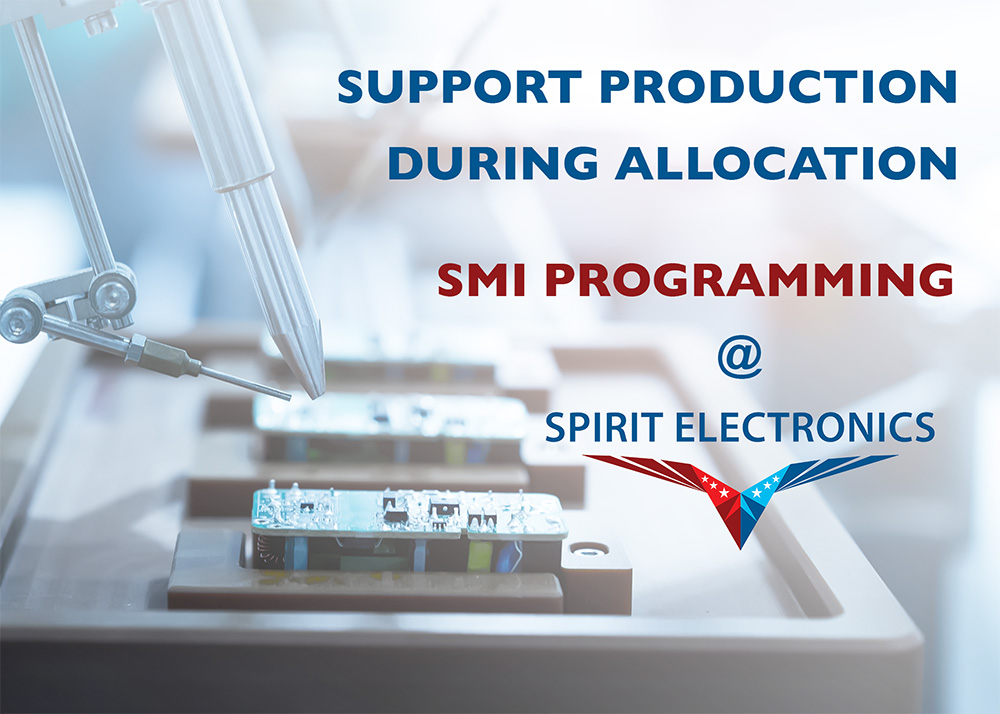Aerospace and Defense companies are already starting to see lead times 52 weeks and beyond. While the microchip shortage is front and center in the news, many related components are starting to extend as well. Supplier-Managed Inventory can be a tried-and-true strategy for avoiding allocation shortages.
While the defense industry can sometimes prioritize their components, the risk of delays and shortages won’t be going away soon. Smaller aerospace companies may also feel the pinch of competition with defense primes. The best time to prevent line-down impacts is now, while there is still time to plan.
Supplier-Managed Inventory, or SMI, is not new, but it may be a better strategy now than ever. In our 19 years of experience running SMI programming, it can be very effective. In an SMI program, a distributor like Spirit takes a material requirements plan (MRP) from a customer and manages ordering, inventory, and warehousing of product months in advance of the program’s needs.
For our customers, ordering higher volume and then protecting it on the shelf in the warehouse with space, manpower, and physical controls for risks like ESD can be costly. But letting a supplier manage that inventory instead can relieve cost, logistical effort and quality challenges while making sure product is on-site and ready for the production line.
How SMI Works
Setting up an SMI program starts with an MRP analysis. The program can be tailored to meet the customer’s workflows and procurement systems to manage ordering and make sure order requirements are flowed down correctly. The supplier can then manage those requirements and order quantities that support the production schedule long before the needed date. One program can manage just a few components or your full BOM.
When ordering direct, a customer often must manage minimum and multiple quantity requirements from manufacturers. Packaging, screening, and inspection of products can also be costly and require sending parts to multiple suppliers and locations for value-add work.
A supplier-managed program takes that burden off the customer. Quantities can be ordered and shipped as demand requires, and the supplier can manage any remaining stock. Bringing value add services like packaging, XRF analysis, board assembly, and testing in-house can also reduce the need for multiple stops along the supply chain.
Manage & Protect Inventory
SMI program providers experienced with aerospace and defense requirements can also warehouse parts under careful ESD, FOD, and environmental protections that are essential for high-reliability parts. Warehousing provides the same level of protection, control, and transparency as if the parts were at the customer’s facility. SMI can even be customized for on-site consignment programs, allowing customers to have the product at their facility until it is consumed for production.
Supplier-Managed Inventory makes your supply chain more efficient in times of allocation and shortage. By simply analyzing production needs, your SMI program can fill your production pipeline with the right supplier.


